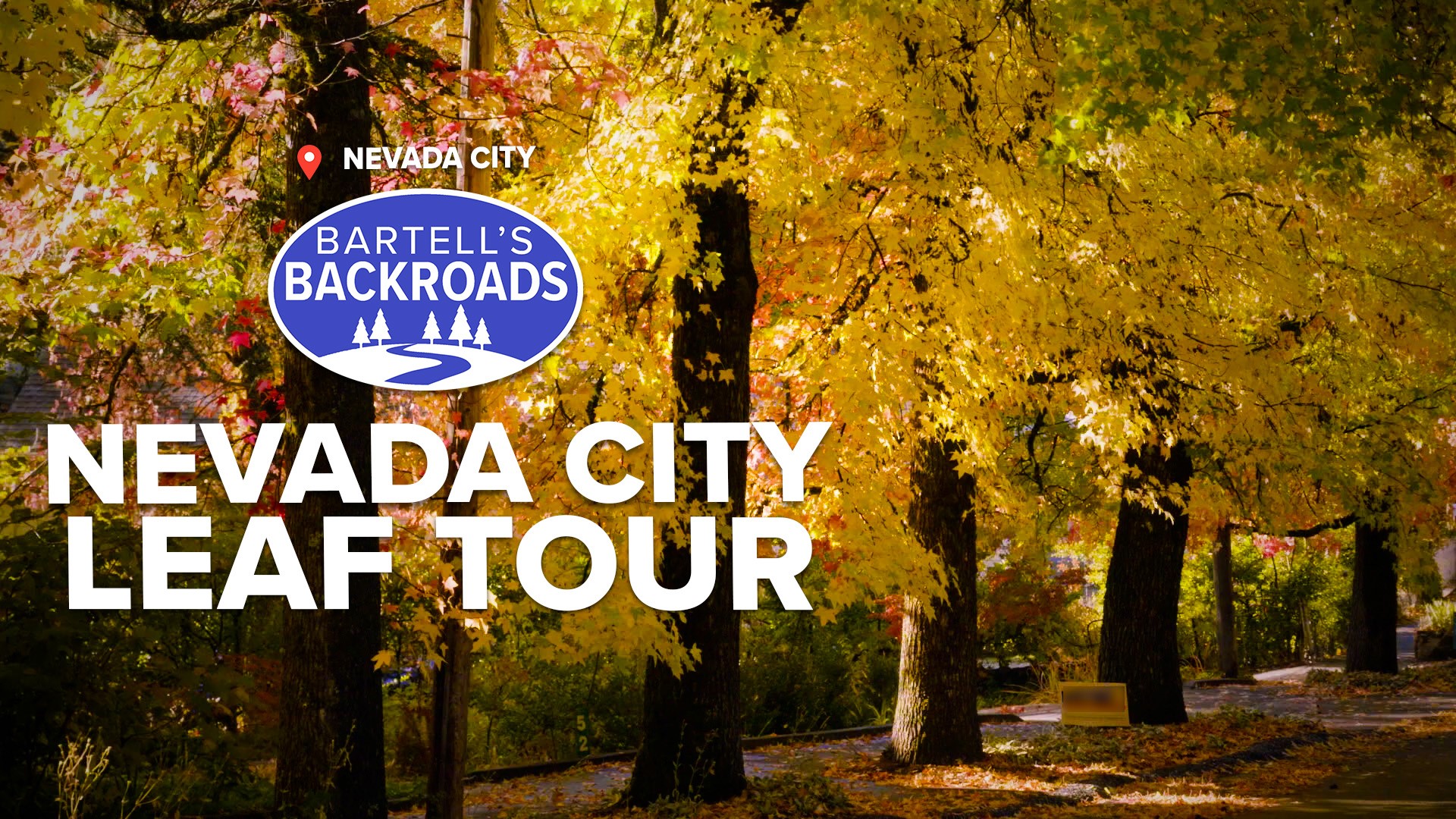NEVADA CITY, Calif. — As the early morning sun warms Nevada City, a thin layer of ice melts from the trees, lighting off a firecracker of color throughout downtown. The red, yellow and orange-colored leaves are usually reserved for the East Coast, but in this little foothill town, visitors get to experience the vibrant hues of autumn, too.
The contrast of the maple, elm and dogwood trees against the historic homes make for some stunning pictures, but the snapshot of Nevada City today looks nothing like what it did during the Gold Rush. Jesse Locks is director of the Nevada City Film Festival, but also wears many hats in town including promoter of the Nevada City Tree Tour, a self-guided historical tour of the city's diverse foliage.
“If you look back 150 or 160 years ago, all the trees would have been cut down,” said Locks. “As diverse as the population was back then, you can see that now, today in the types of trees.”
TAKE A TRIP ON BARTELL'S BACKROADS:
► See an interactive map of everywhere John has visited on the backroads
► Watch all of the Backroads videos
► Follow John on Facebook
During the Gold Rush, people from all over the world came to strike it rich in Nevada City. In the process, they removed many of the native trees to build the town and replaced them with non-native species.
“Folks that came from the East Coast brought maples, people from the South brought magnolia, and people as far as China brought the Tree of Heaven,” said Locks.
Tree seedings became an easy way for miners and immigrants to bring a piece of home with them to California but there was one immigrant, a Frenchman by the name of Felix Gillet, who really diversified Nevada City’s roots.
“He had this interest in horticulture, so he saved up $3,000 -- which was a lot in the 1800s -- and went back to France and bought plants,” said Locks.
When Gillet got back to Nevada City, he started one of the first plant nurseries in California and built a home on what is now Nursery Street. Gillet is considered by many to be the father of most perennial crops in California. He brought over the state’s first fruit and nut trees, and you will find examples of what he brought over growing alongside many of Nevada City’s historic buildings, like the Saint Canice Church on Washington Street.
You can find a link to the self-guided walking (or driving) tour of 42 native and non-native trees in the downtown Nevada City here.
WATCH MORE: California's oldest walnut tree is a massive Modesto landmark | Bartell's Backroads



















